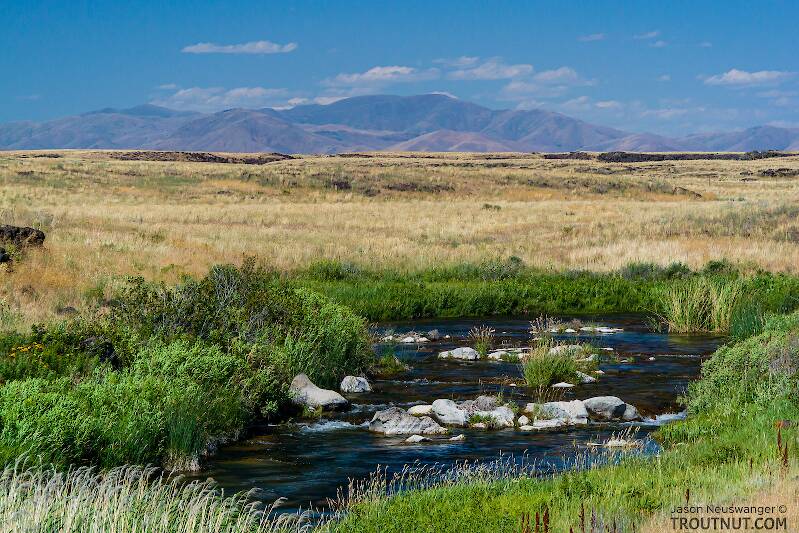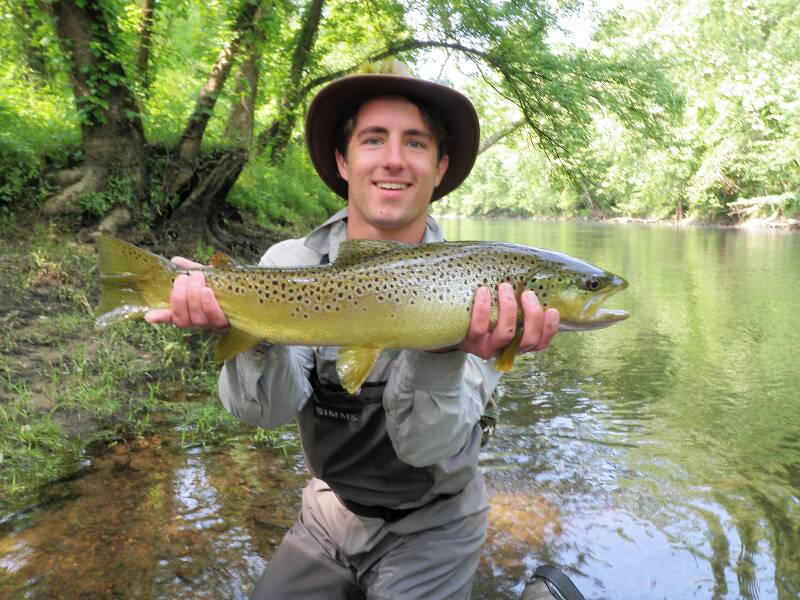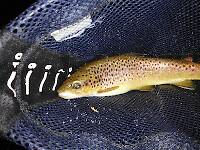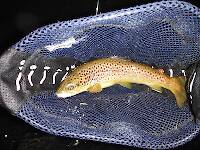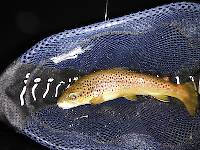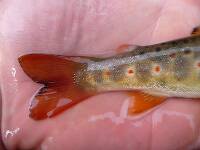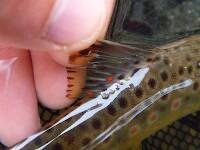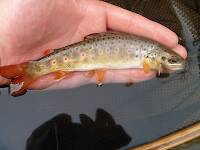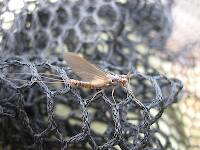
Hex Mayflies
Hexagenia limbata
The famous nocturnal Hex hatch of the Midwest (and a few other lucky locations) stirs to the surface mythically large brown trout that only touch streamers for the rest of the year.
Featured on the forum

This one was surprisingly straightforward to identify. The lack of a sclerite at the base of the lateral hump narrows the field quite a bit, and the other options followed fairly obvious characteristics to Clostoeca, which only has one species, Clostoeca disjuncta.

Troutnut is a project started in 2003 by salmonid ecologist Jason "Troutnut" Neuswanger to help anglers and
fly tyers unabashedly embrace the entomological side of the sport. Learn more about Troutnut or
support the project for an enhanced experience here.
BuckParrish on Feb 4, 2013February 4th, 2013, 2:04 pm EST
Why is it that some Browns have red spots and some don't? Then some have only two or three red in white or red in silver. Then others have lots of red in silver/white and just lots of red spots by them selves.
Are these sub spicies or mating seasons, different times of year, cold or warm water?
Any body know? I'm painting one on an old wooden boat paddle.
I know other fish vary considerably, too. And I'm aware of the sockeye turning almost completely red. But IMO it's not as noticable as with the red spots on a brown fish.
Are these sub spicies or mating seasons, different times of year, cold or warm water?
Any body know? I'm painting one on an old wooden boat paddle.
I know other fish vary considerably, too. And I'm aware of the sockeye turning almost completely red. But IMO it's not as noticable as with the red spots on a brown fish.
Entoman on Feb 4, 2013February 4th, 2013, 2:52 pm EST
Welcome to the forum, Buck!
Bad luck that you didn't check out the forum a few weeks ago as there were several topics up that went into this subject at length. The short of it is that our Brownies come from two strains, the dour Scottish (Loch Leven) and a colorful German (Von Behr). The later is known for its red spots. There is also the factor that all trout tend to turn more silver and lose color in big lakes outside of spawning season.
If you are interested in more in-depth information, type "Brown trout" in the Google search up in the right hand corner (the one on the forum page not the one on your browser). This will provide a list of the extensive forum conversations on this topic.
Bad luck that you didn't check out the forum a few weeks ago as there were several topics up that went into this subject at length. The short of it is that our Brownies come from two strains, the dour Scottish (Loch Leven) and a colorful German (Von Behr). The later is known for its red spots. There is also the factor that all trout tend to turn more silver and lose color in big lakes outside of spawning season.
If you are interested in more in-depth information, type "Brown trout" in the Google search up in the right hand corner (the one on the forum page not the one on your browser). This will provide a list of the extensive forum conversations on this topic.
"It's not that I find fishing so important, it's just that I find all other endeavors of Man equally unimportant... And not nearly as much fun!" Robert Traver, Anatomy of a Fisherman
BuckParrish on Feb 4, 2013February 4th, 2013, 5:14 pm EST
Thanks Entoman, I'll be back
Jesse on Feb 6, 2013February 6th, 2013, 1:22 pm EST
Just like the man said different strains produce different colors. Add in the element of their surroundings and also their movements.. There you have it - different coloration patterns. Also, keep in mind their diet behaviors. That will effect their shading and how vibrant their colors are. Ohhh so much to learn eh ha?
Most of us fish our whole lives..not knowing its not the fish that we are after.
http://www.filingoflyfishing.com
http://www.filingoflyfishing.com
Jmd123 on Feb 7, 2013February 7th, 2013, 1:57 pm EST
I have posted this here before, but for the full story on the diversity of the brown trout (Salmo trutta) genome, check out James Prosek's "Trout of the World" (look it up on Amazon.com, etc.). His survey (in cooperation with local experts in research) and especially paintings of the brown trout of Europe, North Africa, and west Asia will blow your mind. Look up the "cave trout" from Italy! Or the Ferox trout from Scotland...
Jonathon
Jonathon
No matter how big the one you just caught is, there's always a bigger one out there somewhere...
Quick Reply
Related Discussions
Topic
Replies
Last Reply
0
Sep 20, 2013
by Jmd123
by Jmd123

